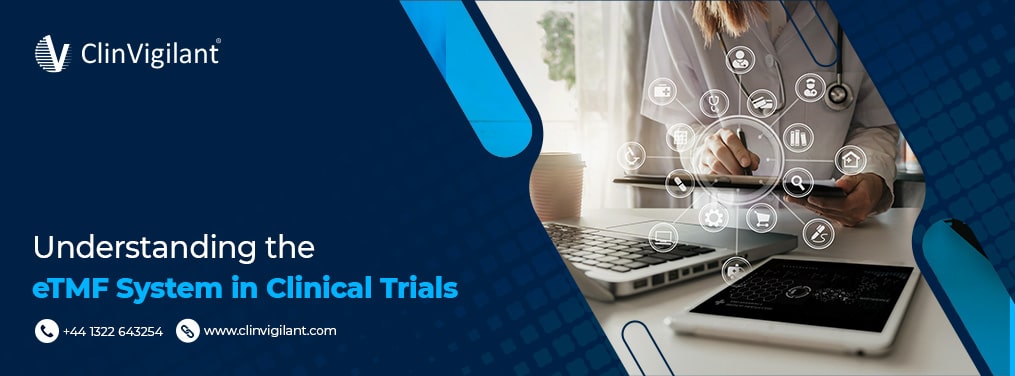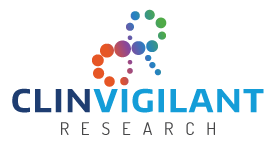
Electronic trial master files (eTMF) are becoming increasingly important in streamlining and improving the efficiency of clinical trials. As trials become more complex and globalized, having an organized, centralized, and accessible eTMF system offers significant advantages over traditional paper TMFs. In this blog post, we will explore what eTMF is, its benefits, how it integrates with other clinical trial systems like EDC, technical approaches, challenges, and the future outlook for eTMF.
What is eTMF in Clinical Trials?
The trial master file (TMF) contains all the essential documents related to a clinical trial, including protocol, approvals, consent forms, case report forms, data clarifications, and more. Maintaining an organized TMF is critical for a successful trial, regulatory compliance, and future reference.
Traditionally, TMFs have been paper-based files organized in binders and file folders. However, the inefficiencies and difficulties of maintaining a paper TMF have led to the development of electronic TMF (eTMF) systems. eTMF allows clinical trial documents and data to be stored, accessed, tracked, and managed electronically in a centralized, cloud-based system.
Key features of eTMF systems include:
- Centralized document repository – all TMF documents stored in one place
- Role-based access and permissions
- Audit trails to track document access and changes
- Automated reminders for document expirations and updates
- Customizable file structures and taxonomies
- Integration with other systems like EDCs and CTMS
- Easy search and retrieval of documents
- Secure cloud-based platforms for access anytime, anywhere
Benefits of eTMF in Clinical Trials
eTMF brings major efficiency and compliance benefits to clinical trials compared to paper-based systems:
- Improved document organization – eTMF centralizes all TMF documents for each study in a structured electronic repository that is easily searchable. Documents have tags and metadata making them easy to find and reducing data duplication.
- Enhanced visibility and oversight – Managers have real-time visibility into TMF status through system reporting and dashboards. This improves oversight and TMF quality.
- Better compliance – eTMF improves compliance with requirements like 21 CFR Part 11. Features like audit trails, version control, and e-signatures improve data integrity.
- Increased efficiency – Instant access to TMF documents saves time compared to searching through paper files and binders. Routine tasks like reviews are faster.
- Reduced costs – eTMF reduces the need for physical document storage space and couriers for transporting paper TMFs. System automation also saves time.
- Collaboration – Online TMF enhances collaboration. All users can access the latest documents anytime, from any location.
- Flexibility & scalability – Cloud-based eTMF systems scale up as studies get larger. The TMF structure can also be easily adapted.
eTMF and EDC in Clinical Trials
Electronic data capture (EDC) systems are used in trials to collect clinical data electronically, instead of using paper forms. Integration between the EDC and eTMF system brings significant advantages:
- Automatic archival of EDC forms like eCRFs into the TMF for long-term record keeping.
- Dynamic linking of eTMF documents to relevant forms. For example, linking an eCRF to the related study protocol section.
- Quick access to eTMF documents directly from EDC forms to aid in data entry like checking the protocol for clarification.
- Consistency between data fields in EDC and eTMF documents.
- Cross-referencing between data points and corresponding documents from a central repository.
- Streamlined system workflows with data moving seamlessly between EDC and TMF.
- Unified audit trails and reporting across both systems.
Overall, EDC-eTMF integration improves data quality, consistency, compliance, reconciliation, and efficiency. It provides a centralized clinical data ecosystem.
Technical Approach to eTMF and EDC in Clinical Trials
Here are some key technical considerations for implementing integrated EDC and eTMF systems:
- Cloud-based platforms – Cloud systems enable easy large file sharing, remote access to all users, scalability to support large studies, and streamlined deployment.
- Centralized database – A unified backend database, like MongoDB or Oracle, improves data integration between EDC and eTMF. It also enables easier reporting and analytics across both systems.
- Standards-based APIs – The use of HL7, CDISC and other standards for system APIs enables smoother interoperability between the EDC and eTMF platforms.
- Configurable metadata framework – Comprehensive metadata on all TMF documents enables more powerful search, automation and system functionality.
- Role-based access controls – Configurable user roles and permissions enable customized access to EDC forms and eTMF documents based on each user’s role and needs.
- Audit trails – Detailed audit logging for all system access, data changes, file uploads and changes supports regulatory compliance.
- Automation tools – Automated reminders for expiring documents, flagging missing items, file versioning, and cross-referencing streamline workflows.
- Reporting dashboards – Real-time visibility into study status, metrics and KPIs enables data-driven oversight into both EDC and TMF processes.
Challenges of eTMF Systems in Clinical Trials
While bringing major benefits, eTMF also comes with some implementation and usage challenges:
- Startup costs – Implementing an eTMF system requires upfront software costs and IT infrastructure investment for hardware, servers, backups, etc.
- Change management – Transitioning users from paper processes to new electronic systems involves challenges in adopting new technology and workflows.
- Migration of legacy data – Transferring old paper TMF documents into the new organized eTMF structure can be time-consuming and costly. Many documents may only be paper or unstructured digital files.
- Integration complexity – Connecting the eTMF with ancillary systems like EDCs can be complex to set up and maintain, especially if systems keep changing or updating.
- Ongoing management – An eTMF system requires dedicated management of user roles, permissions, configurations, taxonomies, integrations, and updates. This is an additional workload.
- Compliance risks – Electronic records introduce new compliance risks like proper e-signatures, data integrity checks, and security controls.
- User adoption challenges – Lack of user adoption due to insufficient training or resistance to using new technology can undermine eTMF benefits.
Patient Engagement in Clinical Research
Historically, clinical trial participants have played a passive role in research. However, the modern approach is shifting towards active patient engagement throughout the trial process. This brings many benefits:
- Patients bring a real-world perspective on trial burdens, improving study experience.
- Engaged patients are more informed about the trial, improving compliance.
- Patients can provide input on outcomes that are meaningful to them.
- Patients can help with recruitment by sharing their positive experience.
- Real-time feedback from patients during the trial helps identify issues early.
Technology is enabling higher patient engagement through strategies like:
- Online patient communities and forums for sharing experiences.
- Use of mobile apps for reminders, reporting outcomes, recordings, etc.
- Wearables and sensors for collecting real-world data.
- Access to their own health records and data through patient portals.
- Electronic informed consent process.
- Providing patients with their own study results.
Results & Outcomes: Impact of Patient Engagement on Clinical Trials
There is growing evidence that higher patient engagement in trials leads to improved outcomes:
- Increased patient retention and lower dropout rates. Engaged participants are more motivated to stay in the study.
- Better protocol compliance. Engaged patients are more likely to follow dosing, reporting requirements, etc. leading to more complete data.
- Higher patient recruitment and faster enrollment due to positive word of mouth.
- More patient-centered data collection based on outcomes important to patients.
- Data that better reflects real-world use and patient experience outside controlled settings.
- Feedback from patients to improve study procedures and site experience.
- More diversity in trial participants leading to better generalizability of results.
While critics note risks like introducing bias, proponents argue benefits outweigh the risks with careful implementation. Tactics like patient advisory boards provide avenues for positive patient input while reducing bias.
The Future of eTMF in Clinical Trials
The clinical trials industry is still in the early stages of adopting eTMF and leveraging its full potential. Here are some upcoming innovations in eTMF:
- Seamless integration between eTMF and data sources like EHR, wearables, apps, and sensors to include real-world data.
- Automation using AI and machine learning for tasks like document classification, search, data reconciliation, and predictive analytics.
- Adaptive machine learning algorithms that customize TMF structure and functions based on patterns in the specific study data.
- Blockchain integration to enhance security, traceability, transparency, and integrity of data.
- Augmented and virtual reality to provide immersive experiences for site users and remote monitoring teams to optimize oversight.
- Bring-your-own-device approaches for subjects using personal devices to engage and contribute data through validated apps.
As technology and tmf clinical research continues evolving, eTMF systems will mature to become the intelligent backbone enabling efficient, compliant, and patient-focused trials.
Conclusion
eTMF brings a new level of organization, efficiency, accessibility and compliance to clinical trial management. As clinical trials continue becoming more global and complex, eTMF adoption will accelerate. However, optimal use of eTMF involves careful upfront planning and change management. Training end-users is also critical for adoption. Looking ahead, integration of emerging technologies like blockchain, automation, and augmented reality into eTMF systems will transform clinical trials. Overall, eTMF is a foundational component of the modern, data-driven vision for trial master file in clinical research.
Frequently Asked Questions
Q: What are the standard essential documents included in an eTMF?
A: Common essential documents in an eTMF include the protocol, amendments, IRB approvals, consent forms, investigator brochures, trial monitoring plans, case report forms, drug accountability records, side effect reports, lab certifications, trial reports, audit certificates, and close-out checks.
Q: Can eTMF systems help with preparing for regulatory inspections?
A: Yes, a well-organized eTMF with rapid access to complete, up-to-date documents can help sites quickly prepare for inspections and audits. eTMF tracking also helps ensure documents are inspection-ready.
Q: How does eTMF software ensure compliance with regulations like 21 CFR Part 11?
A: eTMF software has built-in safeguards for 21 CFR 11 compliance including audit trails, e-signatures, version control, user authentication, validated systems, and archival with data integrity checks.

